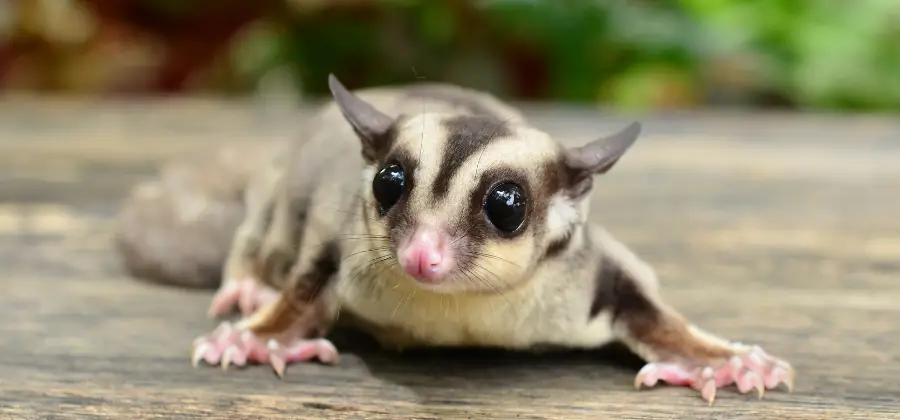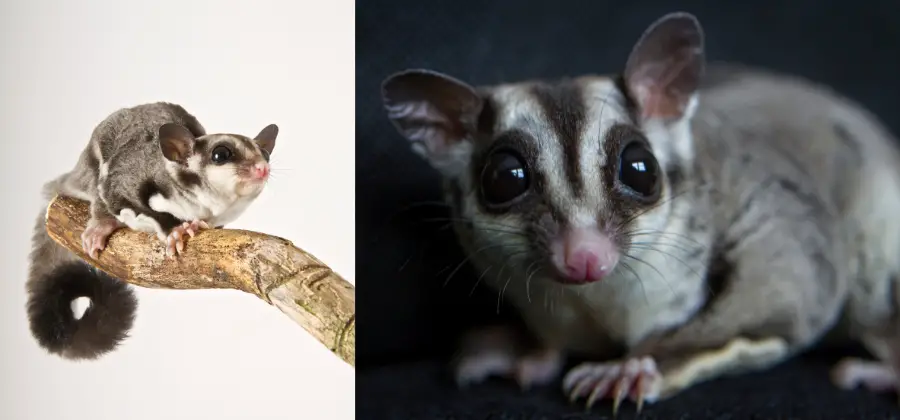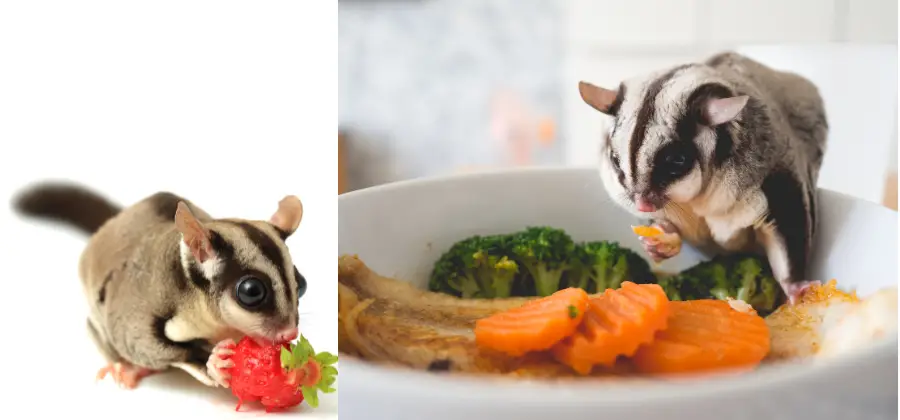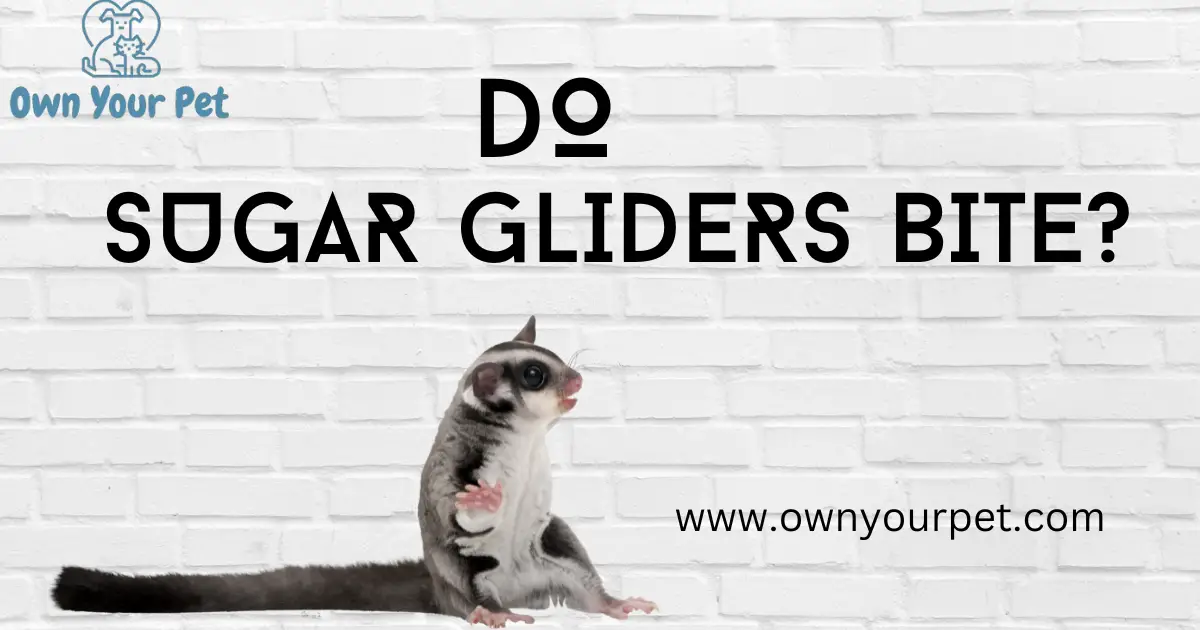“Do sugar gliders bite?” is a common question asked by those considering these adorable and sociable marsupials as pets. While sugar gliders generally have a gentle disposition, it’s essential to address the topic of potential biting behavior.
Sugar gliders, cute and unique pets, have become increasingly popular over the years. These small, nocturnal marsupials are known for their gliding abilities and endearing personalities. Despite their adorable appearance, potential sugar glider owners may wonder if these pets are prone to biting.
In this article, we will discuss the reasons behind their biting and offer tips for preventing this behavior.
Do Sugar Gliders Bite?
Yes, sugar gliders do bite, but the reasons behind this behavior can vary. They may bite due to hunger, annoyance, curiosity, or even playfulness. It’s essential for sugar glider owners to understand these reasons in order to minimize biting incidents and develop a positive relationship with their furry friend.

Wild Vs Domesticated Gliders
Sugar gliders are originally from Australia, New Guinea, and Indonesia. In the wild, they are arboreal animals, meaning they primarily live in trees and use their gliding skills for transportation. Domesticated sugar gliders may not have the same need for gliding, but their natural instincts and behaviors still occur.
Nocturnal and Social Animals
Sugar gliders are nocturnal animals, which means they are most active during the night. This is an essential aspect of their behavior, as it allows them to avoid predators and find food more effectively.
Additionally, sugar gliders are highly social creatures and are known to live in groups called colonies. This social nature impacts their interactions with humans and other animals in their environment.
Natural Defense Mechanisms
Being preys in the wild, sugar gliders have developed various defense mechanisms, one of which is biting. Biting in sugar gliders serves multiple purposes such as asserting dominance, showing excitement or fear, and even grooming each other as a sign of affection.
In domesticated settings, the reasons for biting may vary. Stress or feeling threatened can trigger sugar gliders to bite, as it’s their way of defending themselves. It’s essential to understand their natural behavior and learn how to prevent aggressive actions so that both the sugar glider and their owner have a harmonious relationship.
Reasons for Sugar Glider Biting
Sugar gliders may bite for a variety of reasons. Understanding the underlying causes can help you better care for your sugar glider and prevent biting incidents.
In this section, we’ll discuss a few common reasons for sugar glider biting, including feeling threatened, stress and fear, pain and health issues, and environmental factors.
Feeling Threatened
Sugar gliders are prey animals in the wild, meaning they have a natural instinct to be cautious and defensive. If a sugar glider feels threatened or senses danger, it may resort to biting as a means of protecting itself.
This may be a response to an unfamiliar person, a sudden movement, or other perceived threats. To help your sugar glider feel more at ease, it’s important to approach it calmly and create a safe, comfortable environment.
Stress and Fear
Stress and fear are common factors that can lead to sugar glider biting. A sugar glider may feel stressed due to factors such as sudden changes in its environment, loud noises, or lack of social interaction.
Fear, on the other hand, might be a result of new experiences or unfamiliar situations. To manage stress and fear, provide your sugar glider with a consistent daily routine, a proper diet, and positive reinforcement during interactions.
Pain and Health Issues
Sugar gliders might bite if they’re experiencing pain or health problems. Infections, injuries, or other health concerns may cause a sugar glider to become irritable or sensitive to being handled. It’s essential to monitor your sugar glider’s health and seek veterinary attention when necessary to address any potential issues.
Environmental Factors
The environment of your sugar glider’s cage can contribute to biting behavior. Factors such as overcrowding, insufficient hiding spaces, inadequate lighting, or excess heat may create stress or discomfort, leading to biting incidents.
To create a comfortable and stress-free environment, ensure that the cage is appropriately sized, well-ventilated, and equipped with suitable hiding places, toys, and climbing structures.
By understanding the reasons behind sugar glider biting, you can work to address these factors and create a positive, healthy relationship with your pet.
Preventing and Reducing Sugar Glider Bites

Proper Handling and Bonding
One important aspect of preventing sugar glider bites is learning proper handling techniques. Hold your sugar glider gently but firmly, providing support to their body and limbs. Avoid making sudden movements or holding them too tightly, as this might scare them and result in biting.
Additionally, be attentive to their body language and signals they may give if they are feeling uncomfortable or scared.
Bonding is another crucial factor in reducing the chances of being bitten. Spending ample time with your sugar glider, especially during the early stages of ownership, will help establish a trusting relationship. Regular interaction, such as playtime, feeding, and grooming, can encourage a strong bond between you and your pet.
Training and Socialization
Training your sugar glider to understand that biting is not acceptable behavior can reduce incidents of biting. Consistency and patience are essential during the training process. Offer positive reinforcement, such as treats or praise, when your pet exhibits good behavior.
Socialization is also an important aspect of minimizing biting incidents. Introducing your sugar glider to new people, pets, and experiences can help them feel more at ease in various situations and reduce fear-based biting.
Creating a Comfortable Environment
A comfortable environment is vital in preventing sugar glider bites. Ensure your pet has a clean, spacious, and well-ventilated living area that includes plenty of toys and hiding spots to keep them occupied.
Providing a consistent routine with regular feeding times and periods of interaction can also help your sugar glider feel safe and secure in their environment. Additionally, pay attention to any signs of illness or stress, as these issues may contribute to biting behavior.
Sugar Glider’s Diet and Its Impact on Behavior

Importance of Nutrition
Sugar gliders are small marsupials with a diet consisting primarily of sap, nectar, pollen, and gum from trees, along with insects for protein. Their nutrition greatly impacts their health, energy levels, and overall behavior.
A well-nourished sugar glider will be more active, have a healthier coat, and engage in more natural grooming behavior. On the other hand, a sugar glider with an inadequate diet can become lethargic, develop health problems, and show signs of aggression.
Feeding Requirements
Feeding a sugar glider properly involves providing a balanced diet with a variety of fresh fruits, vegetables, and protein sources. Some common food items include:
- Fruits: apples, grapes, bananas, melon, papaya
- Vegetables: leafy greens, carrots, broccoli, peas, sweet potatoes
- Protein: insects like mealworms, crickets (preferably gut-loaded), cooked eggs, and lean cooked meat
Sugar gliders need to eat about 15-20% of their body weight daily, so it’s important to measure and provide an appropriate amount of food in their food bowl each day. In addition, a calcium supplement may be necessary to ensure they receive sufficient calcium in their diet.
Link Between Diet and Aggression
A sugar glider’s diet can indeed impact their aggression levels. A lack of proper nutrition can lead to territorial behavior and potential biting incidents. It’s important to closely monitor sugar gliders’ food intake and adjust as necessary to maintain a healthy and balanced diet to help minimize any aggressive behavior that might be diet-related.
Do Sugar Gliders Bite? Watch this video
Addressing Sugar Glider Biting Issues
Determining the Cause and Severity
To address biting issues in sugar gliders, it is essential first to determine the cause and severity of the behavior. Biting can be due to hunger, annoyance, curiosity, playfulness, or even grooming. Sugar gliders rely on biting as their main source of communication, so it is crucial to understand the context of their actions.
While their bites don’t usually tear off skin or meat, they can still hurt or cause discomfort, as their teeth act as miniature clamps.
Seeking Professional Help
In case your sugar glider’s biting is aggressive or accompanied by other concerning behaviors such as weight loss or aggression, it might be necessary to seek professional help from a veterinarian.
A vet can help determine if there are underlying health issues contributing to the biting, such as calcium imbalances or other medical problems.
Also, the vet can advise on proper handling techniques and ways to establish boundaries and reinforce positive behavior, ensuring your glider’s well-being and safety.
Can sugar glider bites be dangerous?
Sugar glider bites are generally not dangerous to humans. However, they can cause pain, irritation, and in rare cases, infection if not properly cleaned and treated.
Preventing Infections and Complications
If a sugar glider bites you or other household members, it is essential to clean the wound to prevent infections and complications properly.
Even though they might not present the same danger as larger animals like kangaroos, their bites can still cause pain or discomfort, and infection or other complications can arise if left unattended.
Always be attentive to your sugar glider’s behavior and acknowledge the reason behind their bite. Proper handling and bonding can significantly reduce the occurrence of bites and create a stronger bond between you and your glider.
Miscellaneous Sugar Glider Information and Tips

Housing Temperatures and Enclosures
Sugar gliders need an appropriate living environment to thrive. Their enclosures should be spacious and well-ventilated as they love climbing and gliding. Consider including the following items in their enclosure:
- Climbing branches
- Hammocks or sleeping pouches
- Enrichment toys
- Plants (ensure they are safe for gliders)
Maintaining proper temperature is also crucial, as sugar gliders are sensitive to heat and cold. The ideal temperature range for housing sugar gliders is between 70-90°F (21-32°C).
Sugar Glider Emotions and Connections
These little creatures are known to form strong emotional bonds with their owners. They can exhibit various emotions like affection, happiness, anger, and even dominance. A gentle “love bite” is a way sugar gliders show affection towards their owner.
Sugar gliders are highly social animals and require sufficient interaction or companionship from either humans or other sugar gliders. A lonely sugar glider may suffer from psychological issues like depression and stress. Regular playtime, exercise, and bonding with the owner are essential for their well-being.
Species-Specific Information
Some interesting facts and characteristics of sugar gliders include:
- They possess a unique gliding membrane called the patagium, which allows them to glide from tree to tree.
- Sugar gliders have scent glands on their heads and chests, which they use to mark their territory.
- They have sharp incisors that can deliver a painful bite if they feel threatened or scared.
- There have been rare cases of sugar glider cannibalism, typically occurring due to extreme stress, food shortage, or injury. However, this behavior is not common and is still a subject of study.
- Sugar gliders may contract diseases like salmonella and leptospirosis, so owners should take hygiene precautions when handling them.
Remember to keep these factors in mind when caring for a sugar glider, as it is essential to understand their unique needs and characteristics to provide a happy and healthy environment for them.
